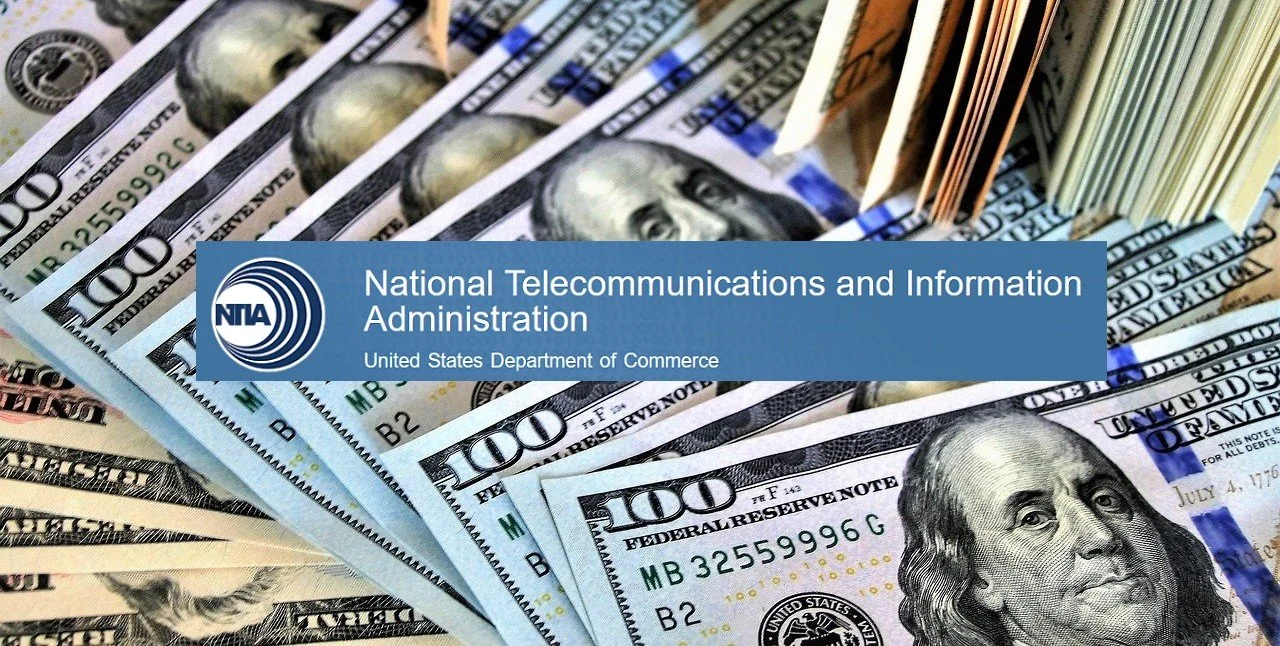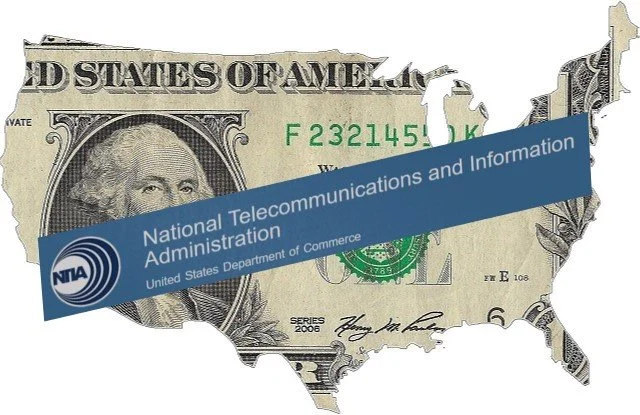Federal Broadband Funding - News Update
House Appropriations Committee Approves Rural Development Funding Bill - $800 Million For ReConnect Program
July 1, 2021 – The U.S. House of Representatives’ Committee on Appropriations has approved the fiscal year 2022 Agriculture, Rural Development, Food and Drug Administration, and Related Agencies funding bill. Among other things, the legislation invests over $907 million in the expansion of broadband service, which includes $800 million for the ReConnect program. The U.S. Department of Agriculture’s Broadband ReConnect Loan and Grant Program awards loans and grants to fund the costs of construction, improvement, or acquisition of facilities and equipment needed to provide broadband service in eligible rural areas. A summary of the legislation is available on the Committee’s website.
FCC, USDA, & NTIA Agree To Share Information, Coordinate Distribution Of Federal Broadband Funds
June 25, 2021 – The Federal Communications Commission (FCC), the U.S. Department of Agriculture (USDA) and the National Telecommunications and Information Administration (NTIA) have entered into an interagency agreement for purposes of sharing information about and coordinating the distribution of federal broadband deployment funds. The agreement is effective June 25, 2021. Among other things, the agreement contains the following information sharing provisions:
The agencies shall share information with each other about existing or planned projects that have received or will receive funds for new broadband deployment under the FCC’s High-Cost Programs, the programs administered by the Rural Utilities Service of USDA, and the programs administered by or coordinated through NTIA.
Upon request from another agency with authority to award or authorize any funds for new broadband deployment in a project area, an agency shall provide the other agency with the following information the agency possesses regarding, with respect to the project area: (a) each entity that provides broadband service in the area; (b) levels of broadband service provided in the area, including the speed of broadband service and the technology provided; (c) the geographic scope of broadband service coverage in the area; and (d) each entity that has received or will receive funds to provide broadband service in the area under the FCC’s High-Cost Programs, the programs administered by the Rural Utilities Service of USDA, and the programs administered by or coordinated through NTIA.
The agencies shall consider basing the distribution of funds for broadband deployment under the FCC’s High-Cost Programs, the programs administered by the Rural Utilities Service of USDA, and the programs administered by or coordinated through NTIA on standardized data regarding broadband coverage.
President Biden Announces Support for the Bipartisan Infrastructure Framework
June 24, 2021 – President Biden has announced his support for a $1.2 trillion Bipartisan Infrastructure Framework, which includes funding for high-speed broadband deployment. Specifically, the Bipartisan Infrastructure Framework calls for $65 billion in funding for broadband infrastructure. Under a section in the announcement labeled “proposed financing sources for new investment” are state and local investment in broadband infrastructure and 5G spectrum auction proceeds. The announcement does not provide further details on the financing sources or how the broadband money will be distributed. President Biden’s initial infrastructure plan totaled $2.25 trillion, which called for $100 billion in funding for broadband infrastructure.
Treasury Department Clarifies Rules For Using Coronavirus Fiscal Recovery Funds To Support Broadband Infrastructure
June 17, 2021 – The U.S. Department of The Treasury has released a list of Frequently Asked Questions that help clarify the May 2021 interim rule for implementing the Coronavirus Fiscal Recovery Funds. In March 2021, the American Rescue Plan Act (ARPA) established the Coronavirus State Fiscal Recovery Fund (Section 602), and the Coronavirus Local Fiscal Recovery Fund (Section 603). These Fiscal Recovery Funds provide support to State, local, and Tribal governments to support their response to the impacts of the COVID–19 pandemic. Among other things, the funding may be used to “make necessary investments in water, sewer, or broadband infrastructure.” Treasury’s Frequently Asked Questions include new questions and answers related to using Fiscal Recovery Funds for broadband infrastructure, three of which are below:
FAQ 6.8. For broadband infrastructure investments, what does the requirement that infrastructure “be designed to” provide service to unserved or underserved households and businesses mean? [added on June 17th] Designing infrastructure investments to provide service to unserved or underserved households or businesses means prioritizing deployment of infrastructure that will bring service to households or businesses that are not currently serviced by a wireline connection that reliably delivers at least 25 Mbps download speed and 3 Mbps of upload speed. To meet this requirement, states and localities should use funds to deploy broadband infrastructure projects whose objective is to provide service to unserved or underserved households or businesses. These unserved or underserved households or businesses do not need to be the only ones in the service area funded by the project.
FAQ 6.9. For broadband infrastructure to provide service to “unserved or underserved households or businesses,” must every house or business in the service area be unserved or underserved? [added on June 17th] No. It suffices that an objective of the project is to provide service to unserved or underserved households or businesses. Doing so may involve a holistic approach that provides service to a wider area in order, for example, to make the ongoing service of unserved or underserved households or businesses within the service area economical. Unserved or underserved households or businesses need not be the only households or businesses in the service area receiving funds.
FAQ 6.10. May recipients use payments from the Funds for “middle mile” broadband projects? [added on June 17th] Yes. Under the Interim Final Rule, recipients may use payments from the Funds for “middle-mile projects,” but Treasury encourages recipients to focus on projects that will achieve last-mile connections—whether by focusing on funding last-mile projects or by ensuring that funded middle-mile projects have potential or partnered last-mile networks that could or would leverage the middle-mile network.
NTIA Releases Comprehensive Guide To Federal Broadband Funding
June 16, 2021 – The U.S. Department of Commerce’s National Telecommunications and Information Administration (NTIA) has released a comprehensive informational guide on over 80 federal programs across 14 federal agencies whose funding can be used for broadband-related purposes. According to the NTIA announcement, the funding opportunities listed “include direct grants, loans, indirect support, and discounts for industry, state and local governments, schools, libraries, small businesses, and other community institutions that are interested in expanding and improving broadband access.” The information will be updated as federal agencies launch new funding opportunities.
NTIA Announces $1 Billion For Broadband Grants To Tribal Lands
June 3, 2021 – The National Telecommunications and Information Administration (NTIA) has announced the availability of $1 billion in grants to expand broadband access and adoption on Tribal lands. NTIA’s Tribal Broadband Connectivity Program will distribute grants to eligible Native American, Alaska Native, and Native Hawaiian entities to support broadband infrastructure deployment, and to facilitate digital inclusion, workforce development, telehealth, and distance learning. Applications are due September 1, 2021. Further information about the Tribal Broadband Connectivity Program and its requirements are available via the Notice Of Funding Opportunity.
NTIA Launches New $288 Million Broadband Infrastructure Program – Applications Due August 17, 2021
May 19, 2021 – The National Telecommunications and Information Administration (NTIA) has issued a Notice Of Funding Opportunity for Broadband Infrastructure Program (BIP). NTIA has $288 million available, and expects to award grants awards within a $5 million to $30 million funding range.
NTIA will award BIP grants to “covered partnerships” for “covered broadband projects.” Covered partnership means a partnership between: (1) a State, or one or more political subdivisions of a State; and (2) a provider of fixed broadband service. Covered broadband project means a competitively and technologically neutral project for the deployment of fixed broadband service that provides qualifying broadband service (25/3 Mbps and low latency) in an eligible service area. The term eligible service area means a census block in which broadband service is not available at one or more households or businesses in the census block.
NTIA will give priority to applications in the following order: (1) broadband projects designed to provide broadband service to the greatest number of households in an eligible service area; (2) broadband projects designed to provide broadband service in an eligible service area that is wholly within any area other than: (i) a county, city, or town that has a population of more than 50,000 inhabitants; and (ii) the urbanized area contiguous and adjacent to a city or town of more than 50,000 inhabitants; (3) broadband projects that are the most cost-effective, prioritizing such projects in areas that are the most rural; and (4) broadband projects designed to provide broadband service with speeds of at least 100/20 Mbps.
Complete applications must be received by www.grants.gov no later than 11:59 p.m. Eastern Daylight Time (EDT) on August 17, 2021. NTIA expects to complete its selection of award by November 15, 2021, and begin announcing winners no earlier than November 29, 2021.
Treasury Department Publishes Rules For Using Coronavirus Fiscal Recovery Funds For Broadband Infrastructure
May 17, 2021 – The U.S. Department of The Treasury has published an interim final rule for the Coronavirus State Fiscal Recovery Fund and the Coronavirus Local Fiscal Recovery Fund. The interim final rule explains how Treasury expects to implement the Funds, as well as the requirements for using the money. There are four eligible use categories, one of which includes broadband infrastructure.
The Treasury Department is seeking comment on the interim final rule in general, and in response to 38 questions in particular. Comments must be received by Treasury on or before July 16, 2021.
The American Rescue Plan Act of 2021 (ARPA) provides $350 billion dollars in emergency funding for state, local, territorial, and Tribal governments to support their response to the impacts of the COVID–19 pandemic. The money will be distributed through the Coronavirus State Fiscal Recovery Fund and the Coronavirus Local Fiscal Recovery Fund. The Coronavirus State Fiscal Recovery Fund establishes a fund for States, territories, and Tribal governments, while the Coronavirus Local Fiscal Recovery Fund establishes a fund for metropolitan cities, nonentitlement units of local government, and counties.
Under both of these programs, funding may be spent in four eligible use categories, as specified in the ARPA and the interim final rule:
(a) To respond to the public health emergency or its negative economic impacts, including assistance to households, small businesses, and nonprofits, or aid to impacted industries such as tourism, travel, and hospitality;
(b) To respond to workers performing essential work during the COVID–19 public health emergency by providing premium pay to eligible workers;
(c) For the provision of government services to the extent of the reduction in revenue due to the COVID–19 public health emergency relative to revenues collected in the most recent full fiscal year prior to the emergency; and
(d) To make necessary investments in water, sewer, or broadband infrastructure.
President Biden’s Infrastructure Plan Includes Broadband
March 31, 2021 – President Joe Biden has released details on his $2 trillion infrastructure plan. It includes $100 billion for high-speed broadband networks. According to the Biden administration’s Fact Sheet: The American Jobs Plan, the infrastructure plan “will bring affordable, reliable, high-speed broadband to every American, including the more than 35 percent of rural Americans who lack access to broadband at minimally acceptable speeds.” The $100 billion for broadband is intended to do the following:
Build high-speed broadband infrastructure to reach 100 percent coverage – The President’s plan prioritizes building “future proof” broadband infrastructure in unserved and underserved areas so that we finally reach 100 percent high-speed broadband coverage.
Promote transparency and competition – President Biden’s plan will promote price transparency and competition among internet providers, including by lifting barriers that prevent municipally-owned or affiliated providers and rural electric co-ops from competing on an even playing field with private providers, and requiring internet providers to clearly disclose the prices they charge.
Reduce the cost of broadband internet service and promote more widespread adoption.





